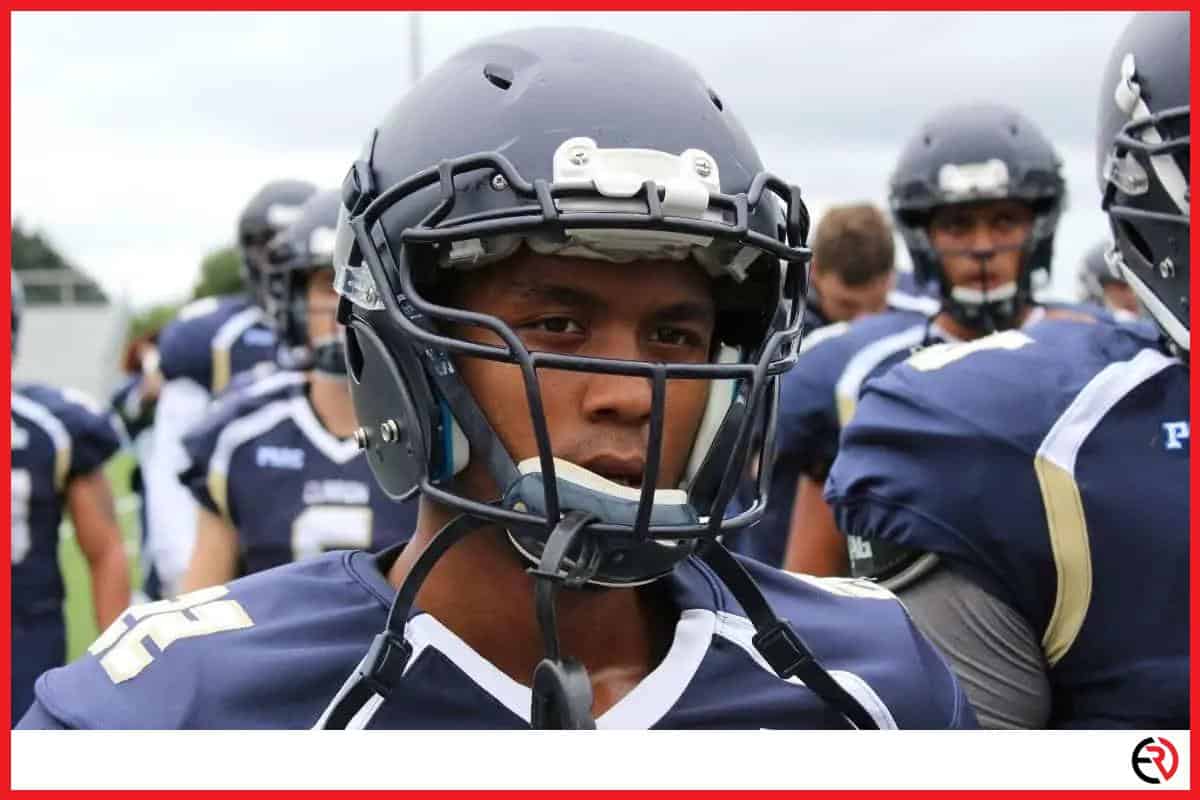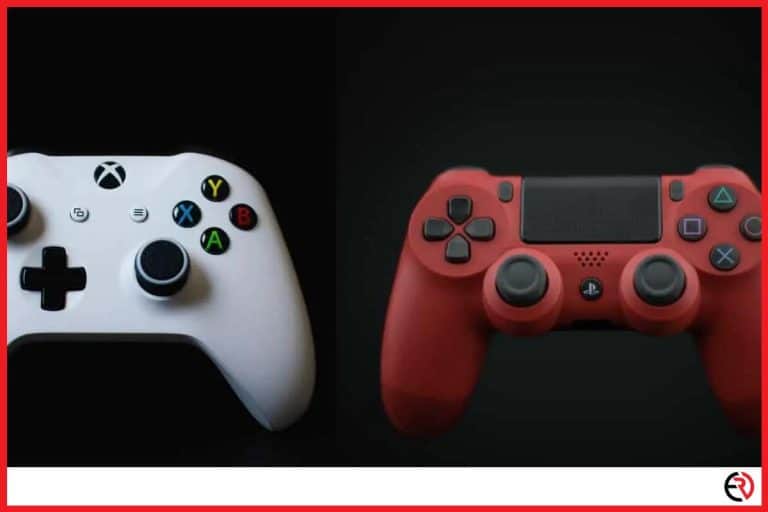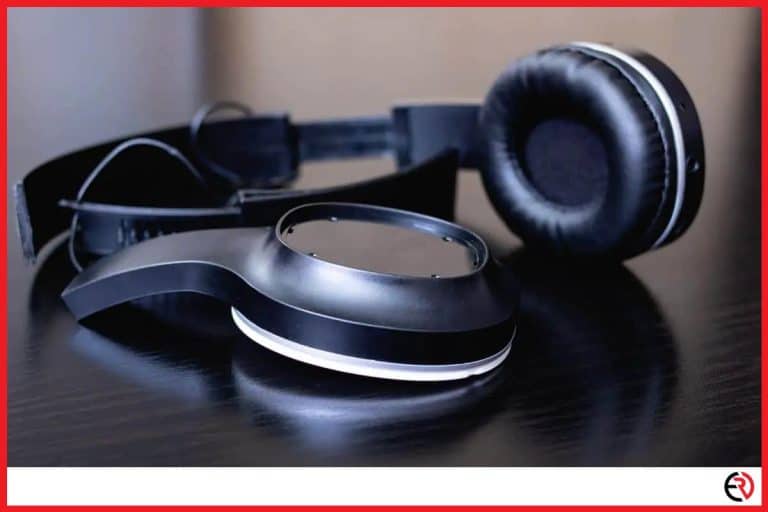Do Quarterbacks Have Headsets in Their Helmets?
This post may contain affiliate links which means that, if you choose to make a purchase, I may earn a small commission at no extra cost to you.
If you have ever watched an NFL football game, you have probably noticed that the coaches on the sidelines all wear either single or double cupped massive headphones with major attached mics. These headsets aren’t for calling in an order for post-game pizza. Rather, these headsets are used for constant communications between all of the coaches.
Since 1994, communication between coaches and players has been allowed but only under specific circumstances and pursuant to controlled regulations. It’s a little complicated but this article explains it all.
NFL Quarterbacks do have small speakers in their helmets that allow them to directly hear from their sideline coach before each play, but they don’t have mics for responding back. The communication is cut 15 seconds left on the play clock. Quarterbacks are only half the equation.
Continue reading to get the full picture.
What are the NFL rules regarding player headsets?
NCAA Division I Football Headset Rules
Let’s get one thing straight. There is a difference between players wearing headsets and coaches wearing headsets. In NCAA football players on the field are not allowed to communicate to the sideline via technology. Basically, in college football, the quarterbacks and all the other players aren’t allowed speakers in their helmets like the pros.
Further, there is a limit on the number of coaches that have headsets. If you are interested, you can read all about the coach’s headset rule reminder sent out as a memorandum by the NCAA Rules Committee in 2019 here.
In Division I NCAA football, each team may use a maximum of 23 headsets. The main group, 15 headsets goes to coaches and coaching assistants for coaching purposes. The remaining 8 are divided up between listen-only speakers or headsets for non-coaching activities. The categories that qualify for headsets under this rule can be further enhanced and managed at the conference level.
So, if you are in a specific conference and want a little more info, go visit your conference’s rule book and look for any rules regarding “coaches’ phones, headsets, or other communication devices.” Note that this exemption from playing rules penalties applies to “coaches’ communication devices,” rather than “coaches’ and players’ communication devices.
NFL Coach and Player Headset Rules
The real question, though, is related to how headsets are applied to the pros in the NFL. To answer that we have to go all the way back to 1956 Cleveland era Browns. Two inventors and Cleveland Browns fans developed the initial radio application of headsets for quarterbacks.
The dedication of these two American heroes led to the first application of radio communication in a game against the Detroit Lions. The opposing coach noticed the new application of technology and wasn’t as excited. The Lions’ coach complained to the NFL board of the time. The result was that all headset communication from coaches to players on the field was banned.
The NFL Rules Of The Road
It wasn’t until 1994 that the league finally approved radio communication with the quarterback. Prior to that, coaches could communicate via headsets, just not with the players. The league allowed teams to add speakers to player’s headsets with some reservations, even from coaches.
In 2008, the league allowed communications to also be included in one player on defense as well. Though there have been no discussions about taking it back or altering it in any way, mainly due to the massive efficiencies and effectiveness created by clear communications.
- There are restrictions on the use of on-field communications.
- On-field players with mics are limited to 2 players
- One offensive player, the quarterback, is allowed communications
- One defensive player, the middle linebacker, is allowed communications
- Players can only listen, they cannot speak
- There are no mics in NFL players’ helmets for communicating with coaches
- The players with communication equipment in their helmets are marked with a green dot on the back
- The communication to the on-field players is cut with 15 seconds left on the play clock
- If one side’s comms fail, no one is allowed to use them on either team
- Both sides links must be operational for anyone to use tech to communicate with players
How is it set up in the helmet?
The standard NFL helmet does not include communication equipment. Specifically, for a helmet to pass inspection before a game, the helmet must not include anything resembling communication technology. Only two players are allowed anything remotely electronic in their helmets. This includes one player on offense and one on defense, usually the quarterback and the middle linebacker. These helmets are clearly marked with a large and noticeable green sticker on the back of their helmets.
Inside a quarterback’s or middle linebacker’s helmet you will find two speakers and no microphones. Think of this as a pair of ultimate headphones. The speakers are set at ear level on the sides of the helmet with direct access to the ears. This keeps the muffling down from hair or fabric. These helmets aren’t allowed to have microphones, so the communication is one way only.
The purpose of this is to give on the ground directions on plays and formations. There isn’t a lot of opportunity due to the play clock time limits, but it is effective. Experienced players appreciate the vote of confidence and the perspective, occasionally. New players almost always heavily rely on their sideline coach for advice and direction in specific situations that are new.
What about the noise from the crowd?

One factor that could impair the ability to communicate is the noise. The speakers, you would think, would be like blasting music. The helmets can only insulate from noise but so much. This is true, though experienced players have continually reflected on the fact that the communication is clear and sounds like a loudspeaker over the roar of the crowd. You can hear the background noise, but the coach’s voice is still clear.
Is it radio/Bluetooth?
In 1994 when the league opened up the game to on-field communications, there was a literal bonanza of tech players wanting the sponsorship deal to provide the coaches with their headsets and the player’s helmet speakers. It wasn’t until 1999 that the league finally signed a sponsorship deal with Motorola to supply the sideline coaches with their headsets. It wasn’t an easy task. They didn’t just give them stock headsets. These had to be like rockets, compared to the paper airplanes that you regularly wear.
Each coach had specific requirements. Some preferred single can headsets, while others preferred the traditional two can headset. Further, 1999 was before the broad application of close quarters radio frequency communications. These headsets were all wired. The communication to the quarterback was via a radio frequency, but each coach had an assistant that would follow them around making sure the headset cord wasn’t in the way or cause any injuries.
Soon enough in 2012, these analog systems became outdated and digital systems were put in place for greater reliability and clarity. The same year, Motorola dropped off as the official sponsor for the headsets worn by coaches. For a few years, teams bought no-name brand headsets until a new contract was signed. The NFL wanted Bose to take over the responsibility because they were the leaders in noise-cancelling technology. The league saw this as an advantage in large arenas with screaming fans.
Bose Enters the Scene
Due to the engineering requirements, Bose initially declined. A few Bose employees, as a side project, continued to tinker with the potential project and developed a proposal. In 2014 Bose signed with the NFL to be the official sponsor for the headsets worn by coaches.
Bose blended different tech and developed new tech due to the unique environment. They applied their industrial aviation headsets for the cans. These were adapted to the preferences of the coach, meaning they had to adapt the noise-cancelling tech to headsets with only one can. The mics were adapted from the mics they use in military helmets worn by tank operators.
So, basically, the Bose headsets that you see on the heads of those coaches are a combination of new tech, industrial aviation tech, and military tank warfare tech. These headsets have noise-cancelling features even with one can and are fully digital and wireless.
But what about the frequency?
The radiofrequency was always an issue. At the start, the analog radio signals were local and infrequently used. However, controlling who was listening came down to a handshake deal between all of the teams. Some frequencies overlapped with local radio stations, radio equipment, and even entertainment services. The half-time shows were often run on the same frequencies. So, everyone had to remember to turn their headsets off at the end of each quarter.
In 2016 the league acquired an exclusive and encrypted frequency range, registered as secret with the FCC. This allows up to ten coaches per team to talk privately via an encrypted and secret radio frequency.
Potential expansion into other leagues
There have been lots of advancements in the technology that is used in the application of communications in NFL football. However, there have been few rule changes or modifications. Though the sponsor may change with time, the use of directly yelling at your quarterback via two small speakers won’t be going away any time soon.







